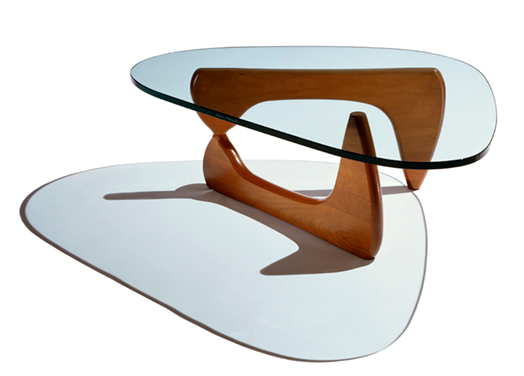Design Classics
Coffee Table, 1948
Designer: Isamu Noguchi
Manufacturer: Herman Miller

Born is Los Angeles in 1904 to an American mother and a Japanese father, the artist Isamu Noguchi spent part of his childhood in Japan. His sojourn included an apprenticeship with a traditional carpenter, where he developed a love for craftsmanship, hand tools and natural material. During most of his adult life, he commuted between a studio in a former factory in Long Island City, N.Y., and a 200-year-old traditional house in Mure, Japan, where he produced sculptures, stage sets for choreographer Martha Graham, garden designs, interiors, lighting and furniture. “By the time of his death in 1988,” says Noguchi expert Bruce Altschuler, “he had created a body of work that crossed the boundary between fine and applied art.”
WHEN
In 1939, A. Conger Goodyear, the president of the Museum of Modern Art, commissioned Noguchi to design a piece of furniture for his home. The result was a low glass-topped table with rosewood supports. Noguchi altered the table and made a small plastic model that he sent to the American interior designer T.H. Robsjohn-Gibbings who promptly marketed it as his own design. Not to be outdone, Noguchi made another variation of the table in 1944. It was manufactured by Herman Miller and made Noguchi a rich man. While Noguchi claimed in his autobiography that it was featured in an article by George Nelson called How to Build a Table, research has failed to turn up the article.
WHAT
Two identical pieces of sculpted and stained wood are flipped and interlock at right angles to form a tripod base supporting a thick piece of triangular glass with rounded corners. The curvy, smooth pieces look a lot like Noguchi's smooth stone sculptures as they touch each other lightly at a single point.
WHY
Noguchi once said “everything is sculpture.” He believed art should disappear and be one with its surroundings. This piece has been called a table that conceals nothing and reveals everything. Its simplicity and Henry Moore-like biomorphic forms are reminiscent of the bones of some pre-historic creature or an abstract animal. The fusion of the mysterious and the practical as imagined by a great artist make this an appealing and enduring classic.
National Post, April 6, 2006.
